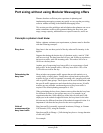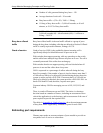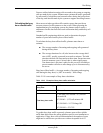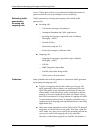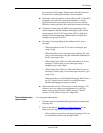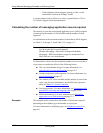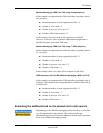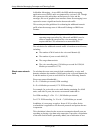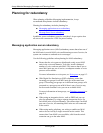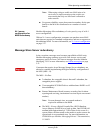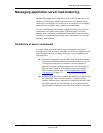
Avaya Modular Messaging Concepts and Planning Guide
12-28 November 2004
Avaya Modular Messaging Concepts and
Planning Guide
In Modular Messaging—Avaya MSS, the MSS and the messaging
application server (MAS) units are connected by a private LAN. Though
this system provides subscribers unified access to voice and fax
messages, the use of graphical user interface clients for messaging is not
expected to cause a significant load to the network traffic.
This section provides guidelines for evaluating the additional network
traffic when the message store is Microsoft Exchange or IBM Lotus
Domino.
Note: Customers must keep their systems within performance
operating ranges prescribed by Microsoft and IBM Lotus. In
order to support the extra load for voice messaging, Avaya
requires that the CPU utilization be no more than 50%.
The calculation for additional network traffic is based on several factors,
including:
! The number of MAS units in the voice mail domain (S)
! The number of ports on each MAS (P)
! The usage characteristics
! The voice encoding rate (13 kilobits per second for GSM, 64
kilobits per second for G.711)
Worst-case network
load
To calculate the worst-case network load contributed by a voice mail
domain, substitute the number of MAS units in the voice mail domain for
S and the number of ports on each MAS for P in the following formula:
Worst-case network bandwidth =
S x P x 13 kilobits per second (GSM encoding)
S x P x 64 kilobits per second (G.711 PCM encoding)
For example, for a site with a voice mail domain containing five MAS
units, each with 24 ports, the worst-case network bandwidth is:
For GSM encoding, 5 x 24 x 13 = 1,560 kilobits per second
For G.711 PCM encoding, 5 x 24 x 64 = 7,680 kilobits per second
In addition, it is necessary to apply a factor of 10% to allow for the
overhead that is applicable to the network protocols and options that are
in operation.
This calculation is based on the worst-case assumption that all ports are
recording or playing voice data at the same time. It provides a calculation
of the total network traffic potentially added, but no indication of how




